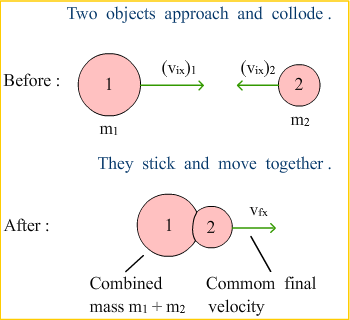|
|
A collision is an isolated event in which two or more bodies (the colliding bodies) exert relatively strong forces on each other for a relatively short time.These forces are internal to the colliding-body system and are significantly larger than any external force during the collision. |
A collision in which the two objects stick together and move with a common final velocity is called a perfectly (or completely) inelastic collision (ÍêÈ«·Çµ¯ÐÔÅöײ)
|
 |
The kinetic energy of a system of two colliding bodies is conserved for elastic collision.
|
|
| |
Classifying collisions |
|
Example: Two particles of equal masses have an elastic collision, the target particle being initially at rest . Show that (unless the collision is head-on) the two particle will always move off perpendicular to each other after the collision. 
|
 |
|
| |
Elastic collisions and relative velocities |
|
In a straight-line elastic collision: |
 |
In an elastic collision, the relative velocity of the two bodies has the same magnitude before and after the collision. Whenever this condition is satisfied, the total kinetic energy is also conserved. |
|
